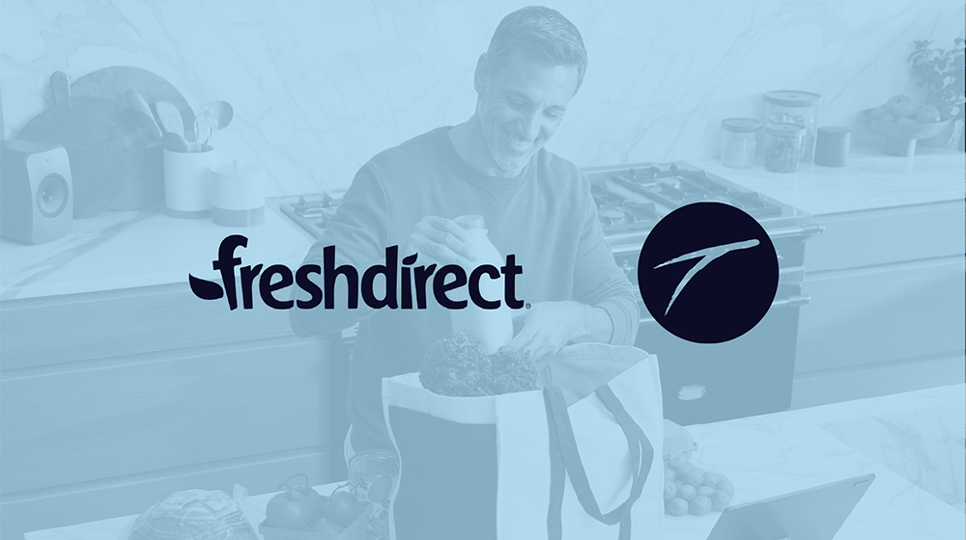Case Studies Data and measurement
FreshDirect delivers 388% increase in conversions with programmatic advertising

Select your country or region to see content tailored to your country.
Recruiting fraud is a growing issue for many companies.
The Trade Desk takes this issue seriously and is taking steps to address it.
Data and measurement

Learn how the hospitality leader gained an advantage through smarter use of first-party data and personalized creative.
By now, every consumer has seen ads on the internet promoting items or experiences they have already purchased or are no longer interested in. For brands trying to reach customers and prospects as many times as possible, this result is both inefficient and expensive. But it doesn’t have to be. With the help of The Trade Desk, Marriott International and its agency, Digitas, took retargeting to a new level.
Using The Trade Desk’s suite of dynamic creative optimization (DCO) products, such as Dynamic Creative Rules, Marriott was able to boost bookings attributed to the retargeting campaign by nearly three times, while increasing campaign efficiency and reducing cost per acquisition (CPA) performance by over 50 percent.
Getting personal with creative
As the world’s largest hospitality company, Marriott operates 30 brands in more than 130 countries. Accommodations range from luxury resorts like the Ritz Carlton to upscale hotels for busy executives (such as JW Marriott and Westin) and family-friendly chains like SpringHill Suites, with all stops in between.
In the past, a visitor to one of Marriott’s sites who didn’t end up booking a room might later be shown a generic advertisement for Marriott properties. But business travelers looking to book a suite at the Ritz have very different needs, expectations, and budgets than a busy parent looking for places to stay on a family road trip. So why should they be seeing the same ads?
From May to December 2021, Marriott’s U.K. division and Digitas began to experiment with DCO with rules-based creative messaging built on attributes like a traveler’s current location, first language, desired destination, dates of travel, and hotel brand preferences. The theory: The more precisely you can match the creative to a particular kind of traveler, the more likely they are to return to a Marriott site to complete their booking.
Identifying the audience
The first step for Marriott was identifying who visited their site with the intent to book a room. This is where The Trade Desk’s universal pixel and tracking capabilities helped Marriott better understand its visitors. By placing The Trade Desk’s pixels on their web properties, Marriott can capture data and insights across all its brand sites. Signals such as desired destination and travel dates can be passed within a single pixel fire. Digitas can then segment the audience and retarget across all channels, including display, video, native, audio, and Connected TV.
With the audience established and advertising creative in place, Digitas applied The Trade Desk’s Dynamic Creative Rules feature. This allows Marriott to easily pass relevant first-party data to its ad server Jivox, which in turn assembles personalized ads in real time based on several data sources, including Marriott’s reservation system (for room availability and price) and first-party customer data (traveler’s location, language, etc.) via The Trade Desk platform.
To reach as many visitors as possible, Digitas layered on The Trade Desk’s Identity Alliance, a solution that allows Marriott to incorporate device data from all the major industry players — Tapad, LiveRamp, Oracle Data Cloud, and Adbrain — to enable high-quality cross-device targeting and measurement at the user level. This ensures that Marriott targets consumers across all device types, not just the device that a visitor originally used to search for a hotel. As a result of applying this advanced capability, Marriott expanded its audience reach by over 272 percent.
The impact: a 289 percent increase in bookings. Travelers also booked faster — an average of five days after being retargeted, instead of the usual eight — boosting return on ad spend by 65 percent.

Driving performance
Of course, most people don’t necessarily visit a Marriott site to book their accommodations. Using second- and third-party data (often not included in traditional DCO campaigns), the team applied the same personalization techniques to prospective consumers shopping through online travel agencies like Kayak or Expedia. As a result, Marriott can look at airport codes, URLs, and other third-party travel data to understand when a prospective traveler is shopping for a flight, then deliver relevant ads for hotels near their destination.
Marriott also leveraged Koa™, The Trade Desk’s artificial intelligence engine, to enable cost-efficient bidding based on the expected rate to win each auction. By analyzing data from across the internet, Koa automatically optimizes performance and spend to ensure that brands reach the right audience, in the most efficient and effective way. This form of intelligent bidding, combined with Dynamic Creative Rules, helped Marriott realize a 55 percent reduction in the cost of its prospecting campaign.
Prospects are looking up
As people emerged from their COVID bubbles last year, competition for their travel dollars was fiercer than ever. Marriott was able to gain an advantage and drive incremental sales through smarter use of first-party data and personalized creative.
Case Studies Data and measurement

Case Studies Data and measurement

Case Studies Data and measurement
